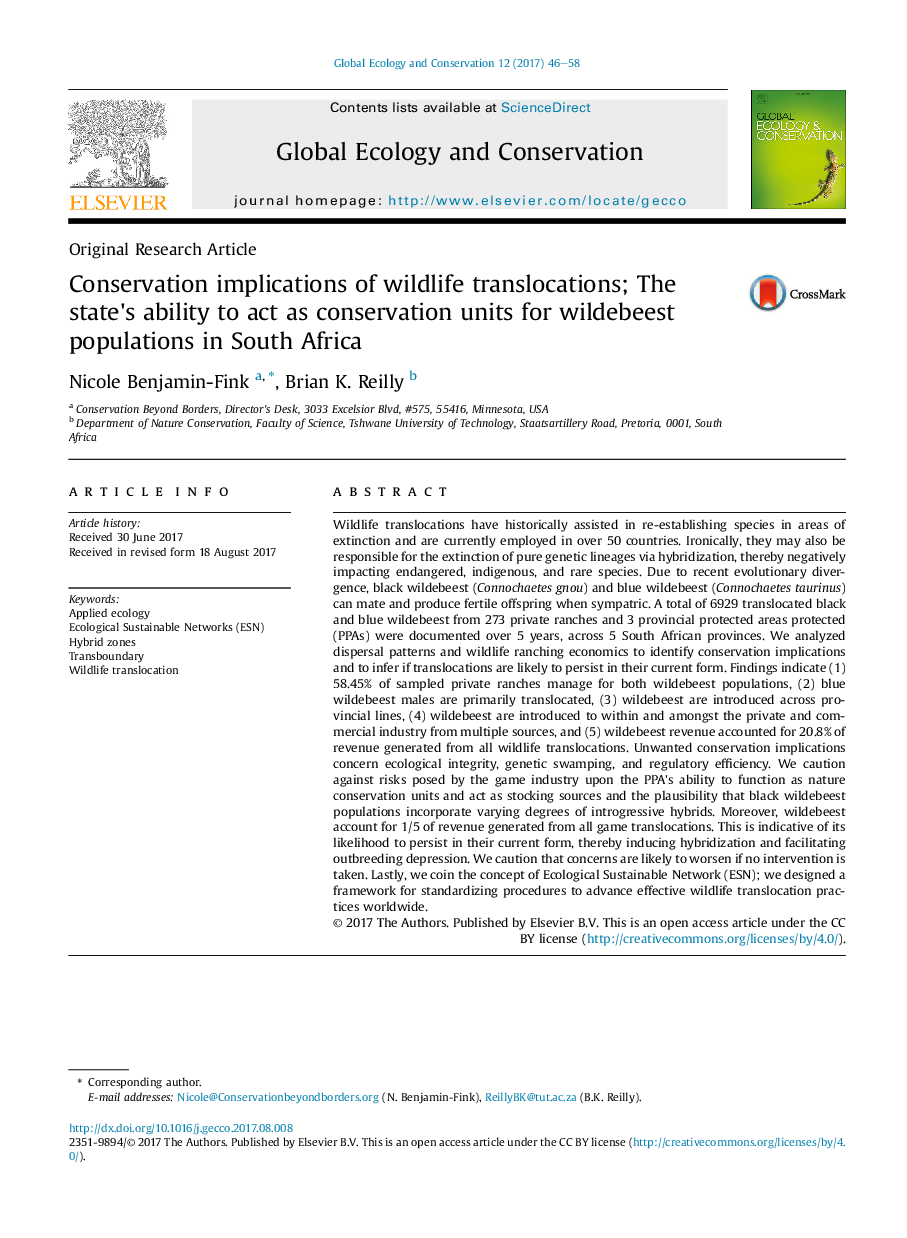| Article ID | Journal | Published Year | Pages | File Type |
|---|---|---|---|---|
| 5742357 | Global Ecology and Conservation | 2017 | 13 Pages |
â¢Standardizing conservation oriented guidelines are needed.â¢Wildebeest are translocated across provincial borders.â¢Wildebeest are translocated within and among state and privately owned land.â¢Translocations pose risks to the state's ability to provide population founders.
Wildlife translocations have historically assisted in re-establishing species in areas of extinction and are currently employed in over 50 countries. Ironically, they may also be responsible for the extinction of pure genetic lineages via hybridization, thereby negatively impacting endangered, indigenous, and rare species. Due to recent evolutionary divergence, black wildebeest (Connochaetes gnou) and blue wildebeest (Connochaetes taurinus) can mate and produce fertile offspring when sympatric. A total of 6929 translocated black and blue wildebeest from 273 private ranches and 3 provincial protected areas protected (PPAs) were documented over 5 years, across 5 South African provinces. We analyzed dispersal patterns and wildlife ranching economics to identify conservation implications and to infer if translocations are likely to persist in their current form. Findings indicate (1) 58.45% of sampled private ranches manage for both wildebeest populations, (2) blue wildebeest males are primarily translocated, (3) wildebeest are introduced across provincial lines, (4) wildebeest are introduced to within and amongst the private and commercial industry from multiple sources, and (5) wildebeest revenue accounted for 20.8% of revenue generated from all wildlife translocations. Unwanted conservation implications concern ecological integrity, genetic swamping, and regulatory efficiency. We caution against risks posed by the game industry upon the PPA's ability to function as nature conservation units and act as stocking sources and the plausibility that black wildebeest populations incorporate varying degrees of introgressive hybrids. Moreover, wildebeest account for 1/5 of revenue generated from all game translocations. This is indicative of its likelihood to persist in their current form, thereby inducing hybridization and facilitating outbreeding depression. We caution that concerns are likely to worsen if no intervention is taken. Lastly, we coin the concept of Ecological Sustainable Network (ESN); we designed a framework for standardizing procedures to advance effective wildlife translocation practices worldwide.
